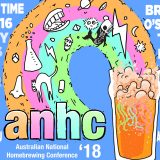Direct link to this audio is here
Luke: We bought Chris along, we thought it would be an interesting discussion to talk about beers that typically get overlooked on shelves. It’s something that I look, around Slowbeer…
Dave: I think we’ve sort of like, mentioned it; or touched on it in the past on the show but we haven’t really delved into it so it might be fun to have someone with vast experience of it help us out a bit because we don’t really know what we’re talking about often.
Luke: And yeah, looking round Slowbeer there is a lot beers sitting there that I wonder why they are not being snapped up.
Chris: So do I. And yeah, it’s taken a while… how long have I… what five or six years I’ve been doing it for and it’s taken a while to work out what sells and what doesn’t. And still sometimes I’ll just be like ‘why isn’t anyone buying this, it’s so good!”. But there’s usually a lot of factors, like labelling, it shouldn’t play a big role but it does and it’s just, retail craft beer is really tough. People are really apprehensive.
Like if you’ve got a crazy beer on tap, and it’s good because now we’ve got both taps and we’ve got bottles as well whereas in the past we just had the bottles, so it’s interesting seeing that direct comparison. So if you’ve got something weird on tap people are so much more willing to have it because it’s kind of secondary to what they are doing. They’ve come in for a beer, it’s more social. So if they don’t really enjoy it, it’s not the end of the world. Whereas if you’re trying to sell a bottle for takeaway it better be good or…
Dave: But it’s also a bit less of a commitment having a glass to buying a bottle.
Chris: Yeah it is, it’s funny.
Luke: The whole kind of, shared experience, as you were sort of saying, whereas you’re at home, you’re kind of stuck with a beer that you don’t like.
Chris: There’s a lot more riding on it I guess so it’s funny in that respect.
Luke: So are there any that sort of spring to mind, that you are confused by that don’t sell.
Chris: Yeah, there is an Italian brewery… Italian craft I’ve got a real soft spot for because I think out of the really major wine producing countries they’ve got a really great craft culture and it’s really vibrant and really enjoyable. And we see a little bit of it here, Birra Del Borgo gets a lot time here and I think because Leo has been here quite a bit and I also think they were given a bit more credibility bcause of the connections with Dogfish Head. That has helped them quite a bit.
But there is one ‘Extraomnes’ which you might have seen with the dog on the label. They’re not the best labels but their beers are excellent. They do mainly kind of farmhousey styles. They do a really good kind of dry-hopped Belgian pale ale. We had it on tap and it was gone in a couple of hours. We have bottles all of the time just sit there. It’s crazy.
Dave: There’s a regular Extraomnes Saison that is really really good.
Chris: Well this one that I particularly like is the “Zest”. And their coffee imperial stout is amazing as well. There’s some really great stuff, but as I said, I think labels pay a big part. Which is a shame. It shouldn’t but it does. It’s important.
Luke: It is important and I think people… there are some pretty bad labels out there. I was sitting with some of Emma’s co-workers who are graphic designers and one of them was looking round and he said “there’s only one or two labels here that I like the look of”.
Chris: I often think that and it’s, without sounding too negative, but you look at the Kiwi beers that are around they’ve, you know, as a whole the labels are sharp, they look great, they are consistent. You look at a lot of the local ones and there’s only a few specific breweries that really have it down. Not to say the others are bad but they are very safe for the most part. Which, you know I guess each to their own. Not everyone needs to do edgy kind of labels.
Dave: No but I think when you walk into a place like Slowbeer for example when there is just loads of different bottles and it’s a sensory overload if you’re shopping, you need to stand out.
Chris: You do need to stand out.
Dave: But there has to be a time when the reputation precedes the label. Someone like Russian River that just branding comic sans all over their labels which should be death but no one would care at all about that.
Luke: And you think that, like Dogfish Head are a good example where their labels look like clip-art. They are terrible but again they sell really well and I think part of is they have a few beers that get really popular and it’s that sort of steamtrain of hype – I’m not saying that they do bad beers at all – but there is that kind of, people know they do Pliny or a 90 Minute IPA and they just want to get everything.
Chris: A lot of, I dunno I guess we only get a select or a small sample size of American stuff here but there is a lot of stuff that has really terrible labels from the US. Like the Ballast Point stuff. I guess it’s relative to the location of the brewery but they’ve all got fish and stuff on there. I guess if you are from that area it’s an identifier but for everyone else it’s… I don’t know. They are not the most appealing labels around.
Luke: The other one that I know Emma hates the labels of, the Haandbyrggeriet. I don’t understand what their labels are trying to do.
Dave: They are quite confusing graphically. Weird colour combinations.
Chris: They have modernised them though. For a time they were just white with black text. It was black and white. Black ink on a white piece of paper/
Dave: And you’d think they are all the same beer until you looked closely and noticed there was nine of them there. Like weird like yellows and stuff that I sort of like, can’t really focus on correctly.
Luke: How do they sell, I’m curious about those.
Chris: Some sell really well, like the Norweigan Wood sells really well. The,, I don’t even know how to say it, Sundland Kreosot, which is a smoked black IPA. That sells really well. Some of their lambics do quite well but you just gotta pick and choose. If you were to have six of their beers on your shelves you wouldn’t get through them all.
Dave: I think that sort of kicks off the conversation we had earlier about the sort of non-English labels getting overlooked when they probably shouldn’t. Where even like a little bit of… looking a little bit further for the importers label across where you might find out a bit more about the beer would encourage you to take a chance on them.
Luke: But Mikkeller quite often has no English on his labels and they sell.
Dave: Again that’s more hype driven than people just going “I might try that.. gibberish”.
Luke: But a lot of his labels look really bright and interesting as well. Same with To Ol. Some of their labels are amazing.
Chris: Yeah they are always very interesting.
Dave: One of the ones I mentioned was Amager. Often I’ll be keen to try them because they’ve got a pretty good track record with me but I don’t know what they are going to be.
Chris: Their regular range their labels are pretty average but their Sinner Series is quite interesting as a whole and they are easily the best selling out of the range of Amagers. Just because they look better and their is consistency and you know what it is to a certain extent.
Luke: They are one brewery that every time I try it, I really enjoy it, but I never think to buy it. Possibly the labeling where you look at it and go “I don’t know what this is” and given so much choice it’s hard to justify something as a punt.
Chris: And that’s often what it is and like I said before you’ve got the same beer on tap and you just fly through it. People don’t even blink an eyelid and you gotta work really hard to sell the same beer in bottles. It’s frustrating but it’s the way it is I guess.



